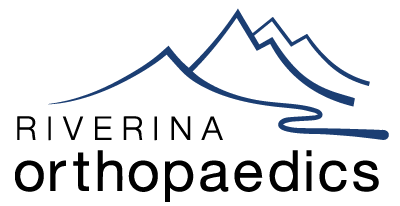Cubital Tunnel Syndrome
Cubital tunnel syndrome is a condition that occurs when the ulnar or “funny bone” nerve, which runs through a narrow passage in the elbow called the cubital tunnel, becomes compressed or irritated. This can result in symptoms such as numbness, tingling, weakness, and pain in the arm and hand. The condition is often caused by repetitive bending of the elbow, leaning on the elbow for prolonged periods, or previous elbow injuries. It is important to seek medical attention if you suspect you have cubital tunnel syndrome, as untreated cases can lead to muscle wasting and permanent nerve damage. Treatment options may include activity modification, splinting, physical therapy, or in severe cases, surgery.
Symptoms of Cubital Tunnel Syndrome
Symptoms can include numbness and tingling in the ring and little fingers, as well as pain and weakness of the hand. Muscle wasting, particularly in the hand, may also occur as the condition progresses.
Specific areas of the hand and fingers affected by cubital tunnel syndrome include the ulnar side of the hand and the ring and little fingers. Potential signs of the syndrome can include weakness, loss of grip strength, and clawing of the fingers, which may affect the ability to perform everyday tasks.
The varying degrees of pain and disability associated with cubital tunnel syndrome can range from mild discomfort to severe pain and limited hand function. As the condition progresses, individuals may experience increased weakness and numbness in the affected hand, making it difficult to perform fine motor tasks or grip objects firmly.
Diagnosis of Cubital Tunnel Syndrome
To diagnose cubital tunnel syndrome, your GP or surgeon will conduct a physical examination to assess nerve function and upper extremity strength, as well as review your medical history to identify any factors that may contribute to nerve compression. Imaging tests, such as X-rays or magnetic resonance imaging (MRI), may also be used to rule out other causes of symptoms and to further evaluate the structures around the elbow. In some cases, nerve conduction studies may be performed to measure the electrical activity of the ulnar nerve and muscles in the affected arm. Nerve conduction studies involve the placement of electrodes on the skin to measure the speed and strength of electrical signals as they travel along the nerves. This helps identify issues such as nerve damage and determine the extent of the damage, which in turn guides treatment.
Treatment Options for Cubital Tunnel Syndrome
Conservative Treatments including Rest, Bracing, and Splinting
Conservative treatments for cubital tunnel syndrome involve rest, bracing, and splinting to help alleviate the pressure on the ulnar nerve. Resting the affected arm and avoiding activities that may worsen symptoms is crucial for promoting healing. Bracing and splinting can help keep the elbow in a neutral position, reducing the strain on the nerves.
It is important to avoid activities that may aggravate the symptoms, such as repetitive elbow bending or pressure on the elbow. Using protective pads to cushion the elbow and modifying daily activities to minimize stress on the nerve can also aid in the healing process.
Using a headset for telephone use can prevent prolonged pressure on the ulnar nerve, while using a folded towel or splint at night can help minimize excessive bending of the elbow during sleep, which can further irritate the nerve.
Incorporating these conservative treatments into daily routines can promote healing and alleviate symptoms of cubital tunnel syndrome, allowing individuals to manage the condition without the need for more invasive interventions.
Non-surgical Treatments such as Steroid Injections or Physical Therapy
Non-surgical treatments such as steroid injections and physical therapy can offer several benefits for individuals with cubital tunnel syndrome. These treatments can help control symptoms such as pain, tingling, and numbness in the elbow and hand, and can also improve overall elbow function.
Physical therapy for cubital tunnel syndrome often includes exercises and treatments aimed at easing pain and gradually strengthening the forearm muscles. This can help to reduce pressure on the ulnar nerve and improve the range of motion in the elbow.
Steroid injections can provide short-term relief from symptoms by reducing inflammation and swelling around the ulnar nerve. However, it’s important to note that while steroid injections can offer immediate relief, they are not a long-term solution.
Overall, non-surgical treatments such as steroid injections and physical therapy can offer significant benefits for individuals with cubital tunnel syndrome. However, it’s important to consult with a healthcare professional to discuss the potential benefits and risks of these treatments and determine the best course of action.
Simple Decompression Surgery to Relieve Pressure on Ulnar Nerve
Simple decompression surgery to relieve pressure on the ulnar nerve, also known as cubital tunnel syndrome, involves releasing the constriction on the ulnar nerve in the elbow. During the surgical procedure, the surgeon will make an incision and carefully move the tissue surrounding the nerve to relieve the pressure. The recovery period typically involves keeping the arm elevated and using a splint to protect the elbow.
Patients may experience some pain and swelling immediately following the surgery, and full recovery can take several weeks. Physical therapy may be recommended to help restore strength and range of motion in the arm and hand. This can include exercises to improve flexibility and reduce stiffness in the elbow joint.
The potential benefits of the surgery include decreased pain, improved hand function, and a reduced risk of long-term nerve damage. However, there are also risks involved such as infection, nerve injury, or incomplete relief of symptoms.
Rehabilitation options post-operation may include exercises to improve grip strength and reduce nerve irritation. It is important for patients to follow their surgeon’s and physical therapist’s recommendations for a successful recovery.



